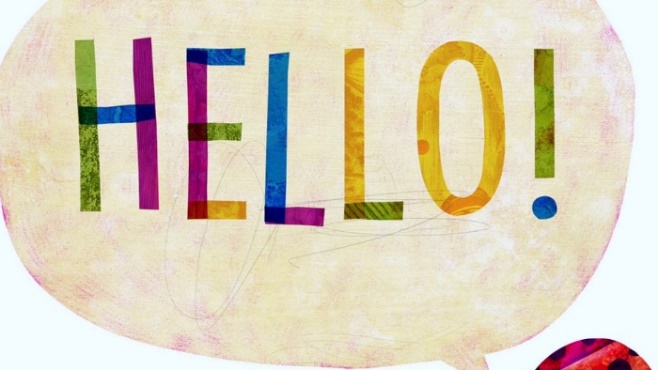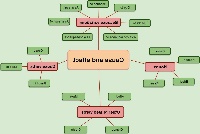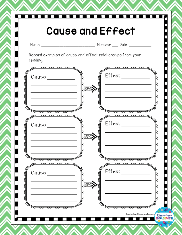
|
Module 7 |
|
||||||||||||||||||||||||||||||||||||||||||||||||||||||||||||||||||||||||||||||||||||||||||||||||||||||||||||
|
Teacher’s name: |
Zhomartov Nurali Ruslanovich |
||||||||||||||||||||||||||||||||||||||||||||||||||||||||||||||||||||||||||||||||||||||||||||||||||||||||||||
|
Date: |
27.02.2024 |
||||||||||||||||||||||||||||||||||||||||||||||||||||||||||||||||||||||||||||||||||||||||||||||||||||||||||||
|
Grade: 9Б |
Number of people present: 13 |
Number of people absent: |
|||||||||||||||||||||||||||||||||||||||||||||||||||||||||||||||||||||||||||||||||||||||||||||||||||||||||||
|
The Theme of the lesson |
Cause and effect linkers |
||||||||||||||||||||||||||||||||||||||||||||||||||||||||||||||||||||||||||||||||||||||||||||||||||||||||||||
|
Objectives according to the Curriculum |
9.3.3.1 - explain and justify their own point of view on a range of general and curricular topics; 9.3.7.1 - use appropriate subject-specific vocabulary and syntax to talk about an increased range of general and curricular topics |
||||||||||||||||||||||||||||||||||||||||||||||||||||||||||||||||||||||||||||||||||||||||||||||||||||||||||||
|
Objectives of the lesson |
All learners will be able to: Most learners will be able to: - watch teenagers taking about the worst party they have ever been to. - listen to teenagers organising a birthday party. practise offering to do something and making requests. Some learners will be able to: |
||||||||||||||||||||||||||||||||||||||||||||||||||||||||||||||||||||||||||||||||||||||||||||||||||||||||||||
|
Evaluation criteria |
Identify facts and details in extended talks with little support Recognize the content of an extended conversation using some supporting information Apply regular and irregular adverbs and comparative degree structures accurately |
||||||||||||||||||||||||||||||||||||||||||||||||||||||||||||||||||||||||||||||||||||||||||||||||||||||||||||
|
Level of thinking skills |
Higher-order thinking skills |
||||||||||||||||||||||||||||||||||||||||||||||||||||||||||||||||||||||||||||||||||||||||||||||||||||||||||||
|
During the lesson: |
|||||||||||||||||||||||||||||||||||||||||||||||||||||||||||||||||||||||||||||||||||||||||||||||||||||||||||||
|
The stage of the lesson/timing |
Actions of the teacher:
|
Actions of the pupils: |
Student actions with special educational needs |
Assessment |
Resources |
||||||||||||||||||||||||||||||||||||||||||||||||||||||||||||||||||||||||||||||||||||||||||||||||||||||||
|
The beginning of the lesson/ 5 min |
Good morning, class! I hope you're all feeling excited for today's English lesson. For our warm-up activity, we're going to work on cause and effect linkers. But first, let's greet each other. Turn to your neighbor and say, "Good morning, how are you today?" Now, let's dive into our warm-up. I'll give you a cause or an effect, and I want you to provide the corresponding linker. For example, if I say "The rain was heavy, ___________ the streets flooded," you would fill in the blank with the appropriate linker.
Are you ready? Let's begin: She missed the bus, ____________ she was late for school. He studied hard, ____________ he passed the exam. The baby was crying loudly, ____________ she wanted attention. The chef burnt the pizza, ____________ it tasted terrible. They practiced every day, ____________ they won the competition.
Take a moment to think about the linkers that would
complete each sentence. When you're ready, feel free to share your
answers. |
Students respond to the greeting from the teacher and take their places in the classroom. They may say: "Hello, teacher! We're good, thank you." "Hi! We're fine, how about you?" "Good morning/afternoon, everyone! We're doing well, thanks." Students then settle down at their desks or assigned seats, ready to begin the lesson. WARM UP.
Great job setting the stage for the warm-up activity! Here are some possible linkers that the students might use to complete the sentences: She missed the bus, so she was late for school. He studied hard, so he passed the exam. The baby was crying loudly, because she wanted attention. The chef burnt the pizza, so it tasted terrible. They practiced every day, and as a result, they won the competition. Encourage the students to share their answers and discuss any variations they may have. This will help reinforce their understanding of cause and effect linkers. |
Students respond to the greeting from the teacher and take their places in the classroom. They may say: "Hello, teacher! We're good, thank you." "Hi! We're fine, how about you?" "Good morning/afternoon, everyone! We're doing well, thanks." Students then settle down at their desks or assigned seats, ready to begin the lesson. |
Student Response to Greeting: Observe how students respond to the greeting. Are they attentive and responsive? Do they greet the teacher back appropriately? This can provide insights into students' social skills and their level of engagement at the beginning of the lesson. 1 point for each correct answer |
Whiteboard
https://www.youtube.com/watch?v=Twh4brVHnE8
|
||||||||||||||||||||||||||||||||||||||||||||||||||||||||||||||||||||||||||||||||||||||||||||||||||||||||
|
The middle of the lesson – 30 min |
Cause and effect linkers 1 Ask students to complete sentences 1–4 with possible words that fit before locating the sentences in the blog to compare their answers. Ask students to work with a partner to complete the rule. Check answers in open class. Refer to the examples in Exercise 1 to clarify and add further examples if necessary. Answers 1 Due to 2 as a result of 3 because of 4 consequently Rule 1 because of 2 Consequently If you’re short on time, set this exercise for homework. Ask students to read the instructions and example. Students work individually to complete the exercise and then check their answers with a partner before whole-class feedback. During feedback refer to the rule for clarification. Answers 1 result of eating 2 due to the bad weather 3 because of a 4 as a result of 5 due to (a) VOCABULARY Adjectives commonly used to describe films 1 Ask students to look back at the blog for help in completing the exercise. Allow them to compare answers with a partner before checking with the whole class. Say the words for students to repeat and check pronunciation. Write the words on the board to elicit and mark the stress on each word. Point out the stress on fetch in far-fetched. Answers 1 delightful 2 stunning 3 thrilling 4 sentimental 5 far-fetched 6 breathtaking 7 memorable 8 action-packed 2 If you’re short on time, you can set this exercise for homework. Give students time to read the sentences and deal with any queries. Check/clarify: on the edge of my seat; car chases; dull. Ask students to work with a partner to choose the correct word to complete each sentence. During feedback, ask students to say why the wrong answer is not suitable. Answers 1 thrilling 2 sentimental 3 delightful 4 action-packed 5 far-fetched 6 stunning 7 memorable 8 breathtaking 3 Students work in pairs to come up with examples. Ask them to write them down in their notebooks. Monitor and help with vocabulary and ideas as necessary. For feedback, listen to some of their ideas in open class. Ask: Which adjectives was it easier to think of example films for? Why? SPEAKING Give some examples of your own or elicit some in open class to get students started. Put students into pairs to create their lists. Encourage them to go into detail when giving their reasons for choosing films and challenge them to use all of the adjectives in Exercise 2. When students have completed their lists, put pairs together to make groups of four. Ask them to compare and agree on a list of four for each category. Listen to some example lists in open class and decide on the best films in each category as a class. |
Ask students to complete sentences 1–4 with possible words that fit before locating the sentences in the blog to compare their answers. Examples: "Due to" "As a result of" "Because of" "Consequently" Ask students to work with a partner to complete the rule. Check answers in open class. Refer to the examples in Exercise 1 to clarify and add further examples if necessary. Rule: "Because of" "Consequently" VOCABULARY Adjectives commonly used to describe films Ask students to look back at the blog for help in completing the exercise. Allow them to compare answers with a partner before checking with the whole class. Say the words for students to repeat and check pronunciation. Write the words on the board to elicit and mark the stress on each word. Point out the stress on "fetch" in "far-fetched". Answers: delightful stunning thrilling sentimental far-fetched breathtaking memorable action-packed If you’re short on time, you can set this exercise for homework. Give students time to read the sentences and deal with any queries. Check/clarify: on the edge of my seat; car chases; dull. Ask students to work with a partner to choose the correct word to complete each sentence. During feedback, ask students to say why the wrong answer is not suitable. Answers: thrilling sentimental delightful action-packed far-fetched stunning memorable breathtaking Students work in pairs to come up with examples. Ask them to write them down in their notebooks. Monitor and help with vocabulary and ideas as necessary. For feedback, listen to some of their ideas in open class. Ask: Which adjectives was it easier to think of example films for? Why? SPEAKING Give some examples of your own or elicit some in open class to get students started. Put students into pairs to create their lists. Encourage them to go into detail when giving their reasons for choosing films and challenge them to use all of the adjectives in Exercise 2. When students have completed their lists, put pairs together to make groups of four. Ask them to compare and agree on a list of four for each category. Listen to some example lists in open class and decide on the best films in each category as a class. This sequence of activities is designed to reinforce cause and effect linkers, expand vocabulary related to film descriptions, and encourage speaking practice by discussing favorite films. It provides both individual and collaborative learning opportunities. |
For students with special needs, it's important to ensure that the activities are accessible and provide necessary support. Here are a few suggestions to accommodate students with special needs: Clarify Instructions: Ensure that the instructions are clear and concise. Repeat or rephrase them if necessary. Provide visual aids or written instructions as additional support. Provide Additional Time: Allow extra time for students to complete tasks or exercises. Flexibility in time management can reduce stress and help students with special needs to fully participate. Modify Tasks: If some tasks are too challenging, consider simplifying them or breaking them down into smaller steps. Provide alternative ways for students to demonstrate understanding, such as verbal responses or drawing pictures. Offer Peer Support: Pair students with special needs with a peer buddy who can offer assistance and support during activities. Encourage collaboration and teamwork. Use Multi-Sensory Approaches: Incorporate various sensory modalities into the lesson, such as visual aids, hands-on activities, or auditory cues. This can cater to different learning styles and enhance comprehension. Provide Individualized Feedback: Offer personalized feedback and encouragement to students with special needs. Focus on their strengths and areas for improvement, and celebrate their progress. Create a Positive Learning Environment: Foster a supportive and inclusive classroom atmosphere where all students feel valued and respected. Encourage empathy and understanding among classmates. By implementing these strategies, you can create an inclusive learning environment where students with special needs can actively participate and succeed in the lesson activities. |
Assessment Criteria: Completion of Exercise 1: Students should correctly complete sentences 1-4 with the appropriate cause and effect linkers. Each correct answer is worth 1 point, totaling 4 points for this part. Understanding and application of the rule for cause and effect linkers: Students should demonstrate understanding by correctly completing the rule. Each correct part of the rule is worth 1 point, totaling 2 points for this part. Completion of Exercise 2: Students should choose the correct adjectives to describe films in each sentence. Each correct answer is worth 1 point, totaling 8 points for this part. Participation in Exercise 3: Students should actively participate in pairs to come up with examples of films. Each pair's contribution is assessed based on their ability to generate examples and engage in discussion. Full participation is worth 2 points. Overall, the assessment is out of 10 points, with points distributed across the completion of exercises, understanding of rules, and active participation in speaking activities. |
Book PPT
PPT Music Words
Book, slide Handouts PPT Book PPT Music PPT |
||||||||||||||||||||||||||||||||||||||||||||||||||||||||||||||||||||||||||||||||||||||||||||||||||||||||
|
The end of the lesson – 10 min |
ЖИ арқылы жасау
ЖИ арқылы жасау
Бөлісу 1 - айлық Материал тарифі-96% жеңілдік 00 05 00 ҚМЖ
Ашық сабақ
Тәрбие сағаты
Презентация
БЖБ, ТЖБ тесттер
Көрнекіліктер
Балабақшаға арнарлған құжаттар
Мақала, Эссе
Дидактикалық ойындар
және тағы басқа 400 000 материал
Барлық 400 000 материалдарды шексіз жүктеу мүмкіндігіне ие боласыз 1 990 ₸ 49 000₸ 1 айға қосылу Материалға шағымдану Бұл материал сайт қолданушысы жариялаған. Материалдың ішінде жазылған барлық ақпаратқа жауапкершілікті жариялаған қолданушы жауап береді. Ұстаз тілегі тек ақпаратты таратуға қолдау көрсетеді. Егер материал сіздің авторлық құқығыңызды бұзған болса немесе басқа да себептермен сайттан өшіру керек деп ойласаңыз осында жазыңыз Жариялаған: Zhomartov Nurali RuslanovichШағым жылдам қаралу үшін барынша толық ақпарат жіберіңіз Поурочный план "Cause and effect Linkers"
Тақырып бойынша 11 материал табылды
Поурочный план "Cause and effect Linkers"Материал туралы қысқаша түсінік
Cause and effect linkers are linguistic devices used to establish the relationship between events or actions and their consequences. They help to convey how one event leads to another, emphasizing the causal connection between them. These linkers are essential in both spoken and written language to create coherence and clarity in expressing ideas.
Examples of Cause and Effect Linkers:
Cause: The heavy rain flooded the streets.
Linker: Therefore, the streets were flooded.
Cause: She missed the bus.
Linker: As a result, she was late for school.
Cause: The factory emitted toxic fumes.
Linker: Consequently, air pollution increased in the area.
Cause: He forgot his umbrella.
Linker: Hence, he got soaked in the rain.
Common Cause and Effect Linkers:
Because: Indicates the reason for an action or event.
Therefore: Shows the consequence or result of an action or event.
As a result: Highlights the outcome of a preceding action or event.
Consequently: Emphasizes the logical result of a pr
Материалдың қысқаша нұсқасы
| ||||||||||||||||||||||||||||||||||||||||||||||||||||||||||||||||||||||||||||||||||||||||||||||||||||||||||||



















